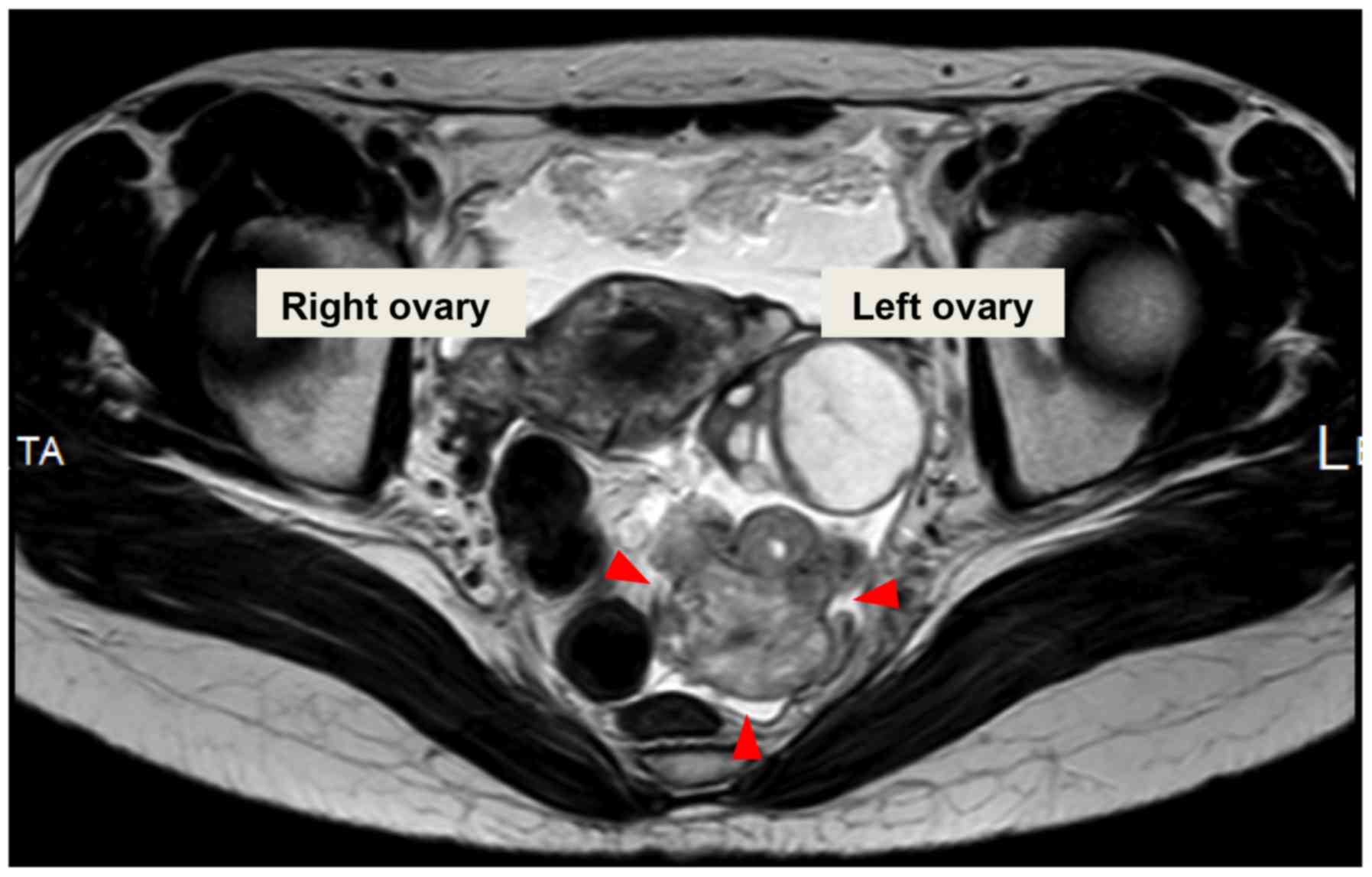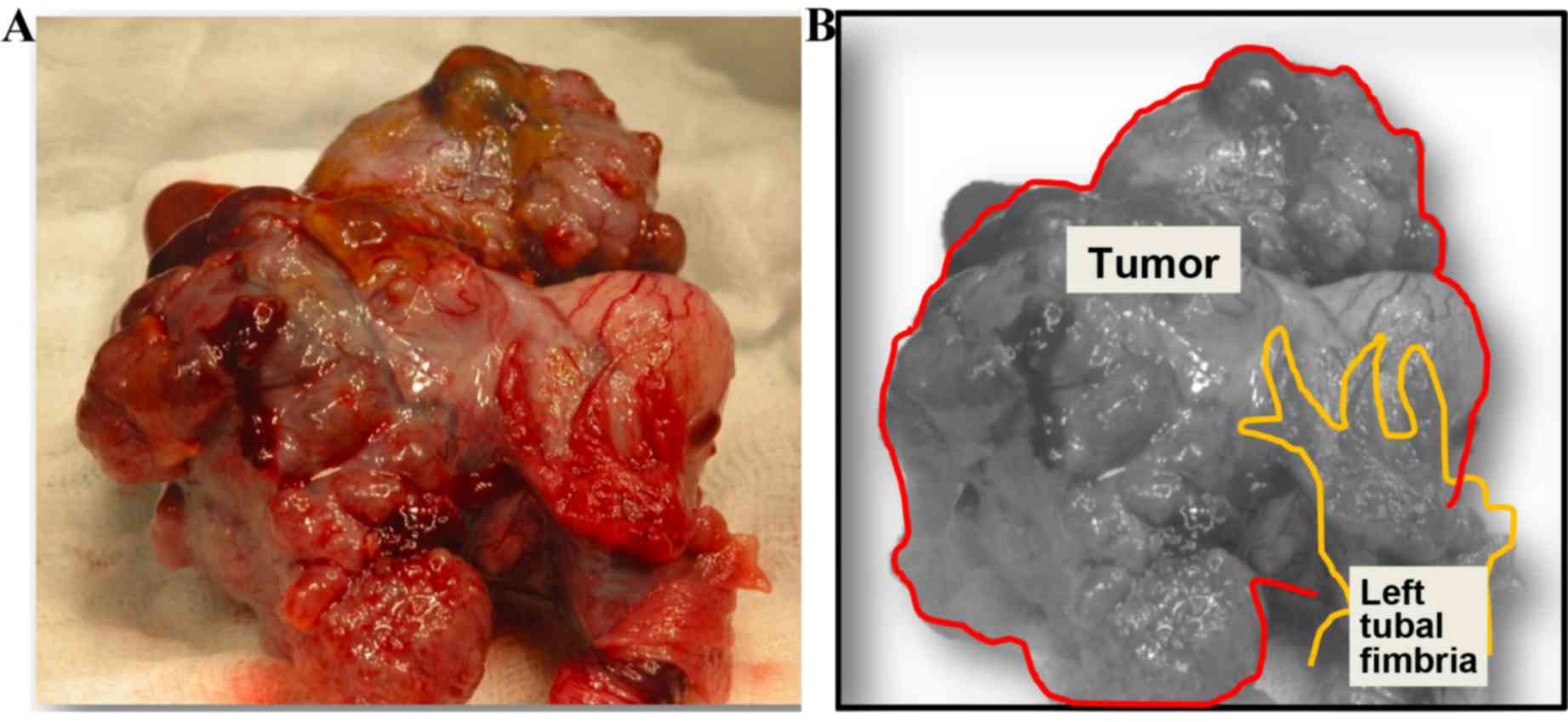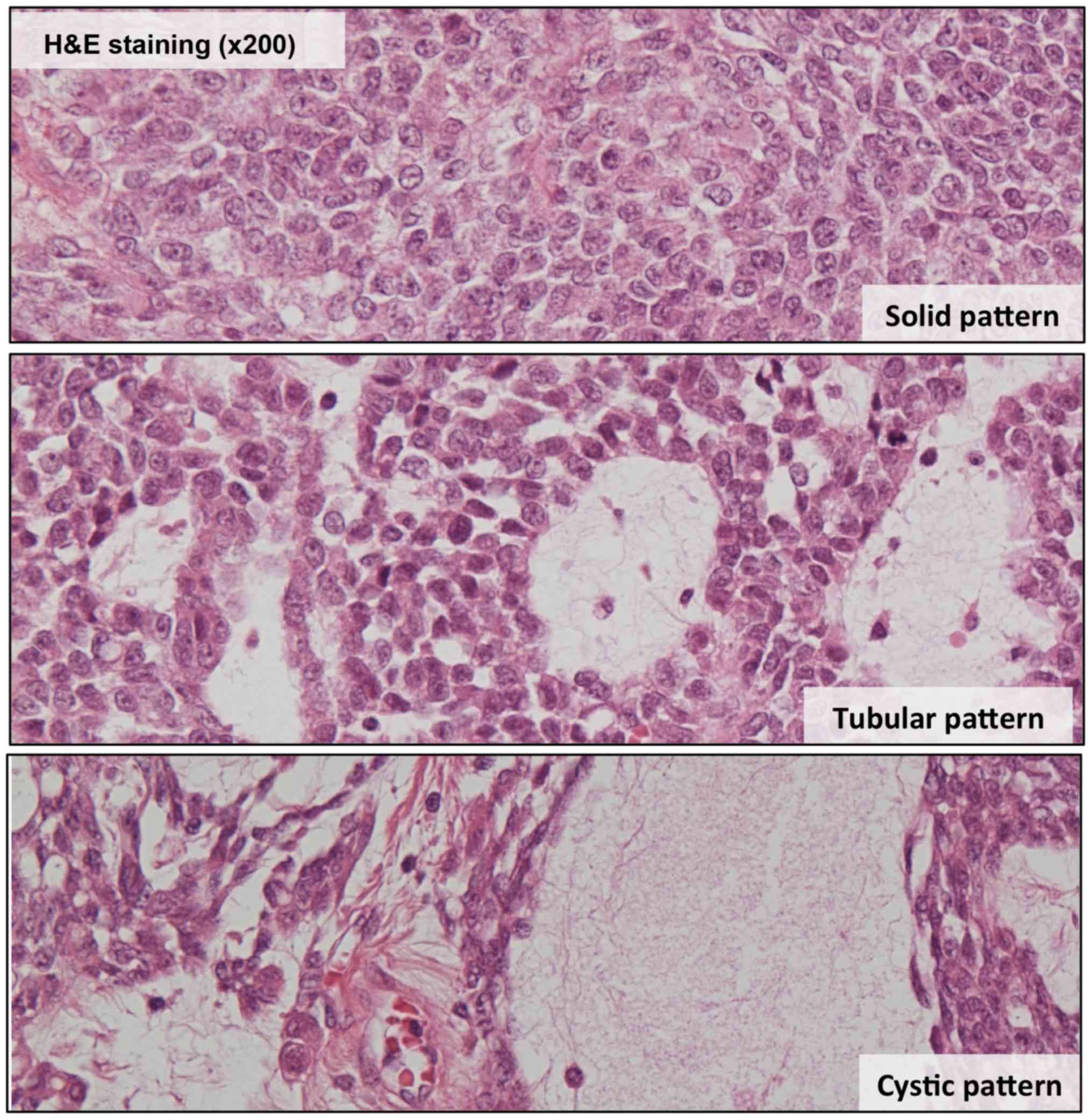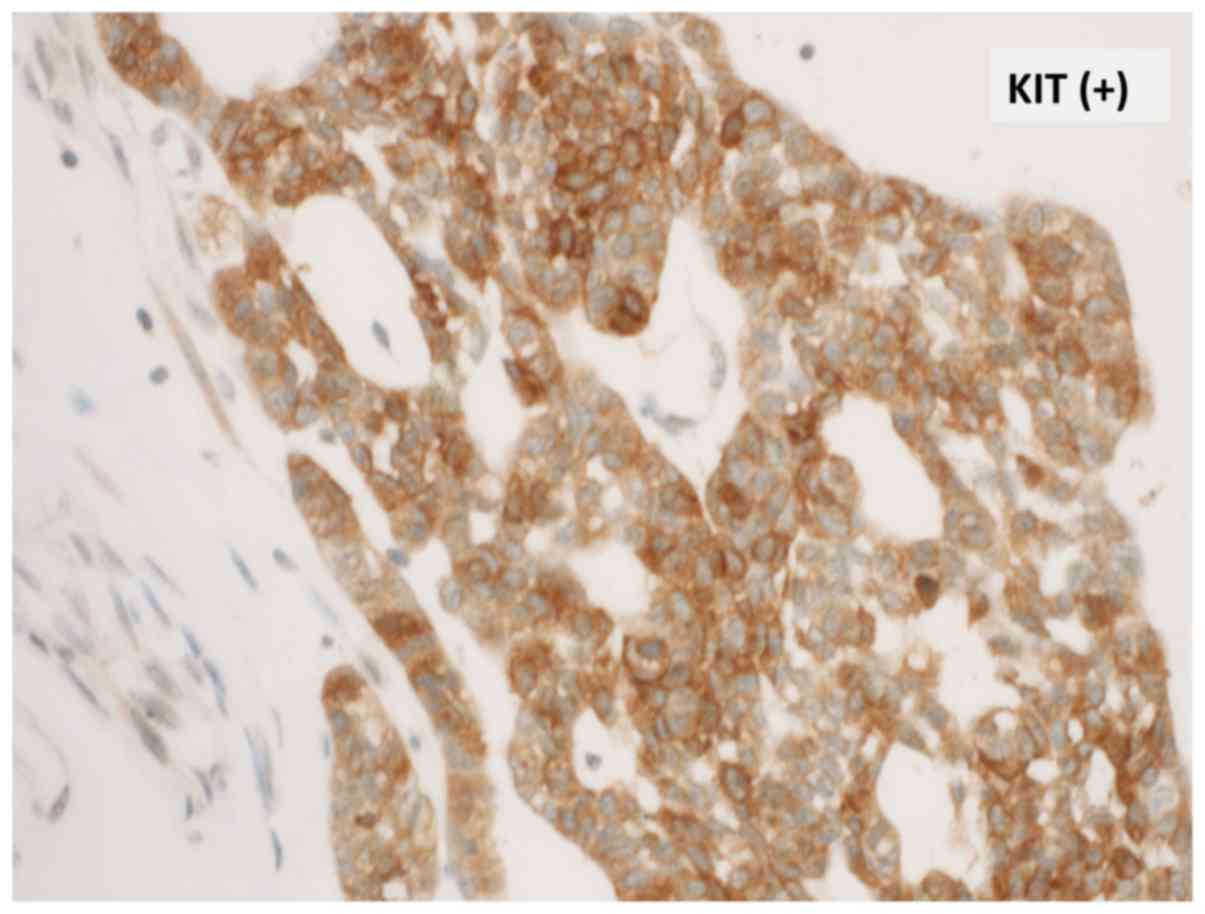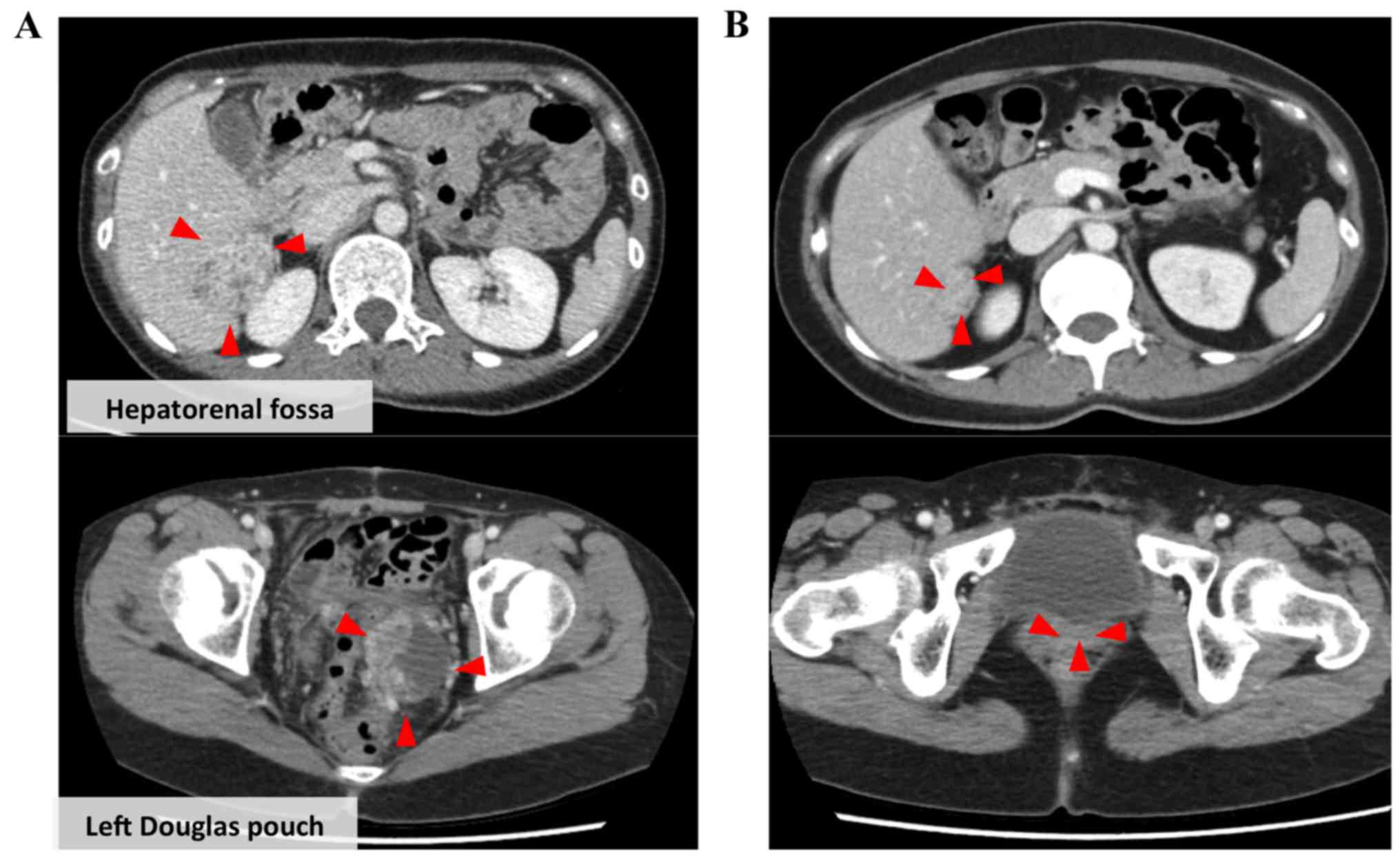Recurrent female adnexal tumor of probable Wolffian origin treated with debulking surgery, imatinib and paclitaxel/carboplatin combination chemotherapy: A case report
- Authors:
- Published online on: March 17, 2017 https://doi.org/10.3892/ol.2017.5874
- Pages: 3403-3408
-
Copyright: © Wakayama et al. This is an open access article distributed under the terms of Creative Commons Attribution License.
Metrics: Total
Views: 0 (Spandidos Publications: | PMC Statistics: )
Total PDF Downloads: 0 (Spandidos Publications: | PMC Statistics: )
Abstract
In view of the small number of recurrent and metastatic cases of female adnexal tumors of probable Wolffian origin (FATWO), there is a distinct lack of evidence to support recommendations regarding treatment. In the present study, a 37-year-old female was diagnosed with a left adnexal tumor and underwent a left salpingo‑oophorectomy (SO). The tumor was found to arise from the left tubal fimbria and extend to the posterior leaf of the broad ligament. Pathological examination identified a number of solid, tubular and cystic architectures, with areas of hyalinization, hemorrhage and necrosis. Immunohistochemistry detected that the tumor cells were positive for cytokeratin (CK)7, vimentin, inhibin and calretinin, and negative for CK20, epithelial membrane antigen, and the estrogen and progesterone receptors. Thus, the patient was diagnosed with FATWO. Following 15 months, the patient developed recurrent tumors and subsequently underwent a total abdominal hysterectomy, a right SO and extirpation of the disseminated tumors, but with incomplete debulking. The tumor cells were immunoreactive for KIT. As there are a limited number of treatment options and few reported cases, limiting the therapy recommendations, imatinib mesylate was administered for 6 months and the tumors were temporarily stabilized for 4 months until the disease progressed. The patient underwent a further debulking surgery that did not achieve complete debulking and was subsequently administered a combination chemotherapy of paclitaxel and carboplatin. This regimen resulted in an almost complete response after 10 cycles. The tumors continued to decrease in size, and the tumors in the left side of the Douglas pouch and the right para‑colic gutter were no longer detectable. To the best of our knowledge, the current study is the first to report carboplatin and paclitaxel combination therapy demonstrating a response of this degree to recurrent FATWO following the failure of imatinib treatment. However, surgical debulking remains the most effective treatment for FATWO when is it is possible. The precise role of chemotherapy, radiotherapy and molecular‑targeting therapy in the treatment of recurrent or metastatic FATWO remains to be elucidated, and therefore, novel strategies to overcome this disease must be prioritized.



